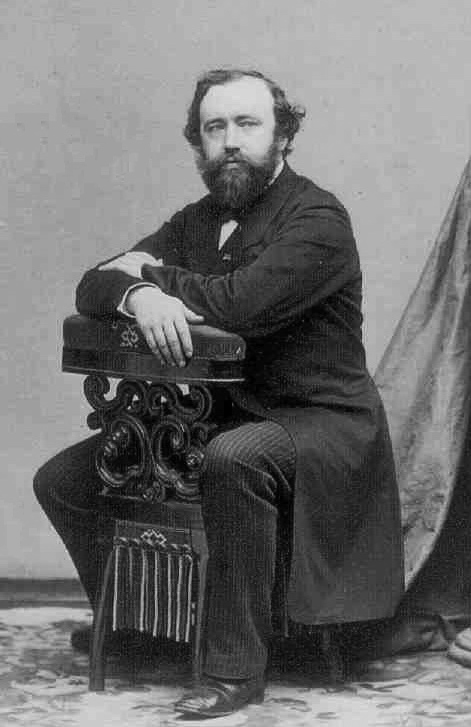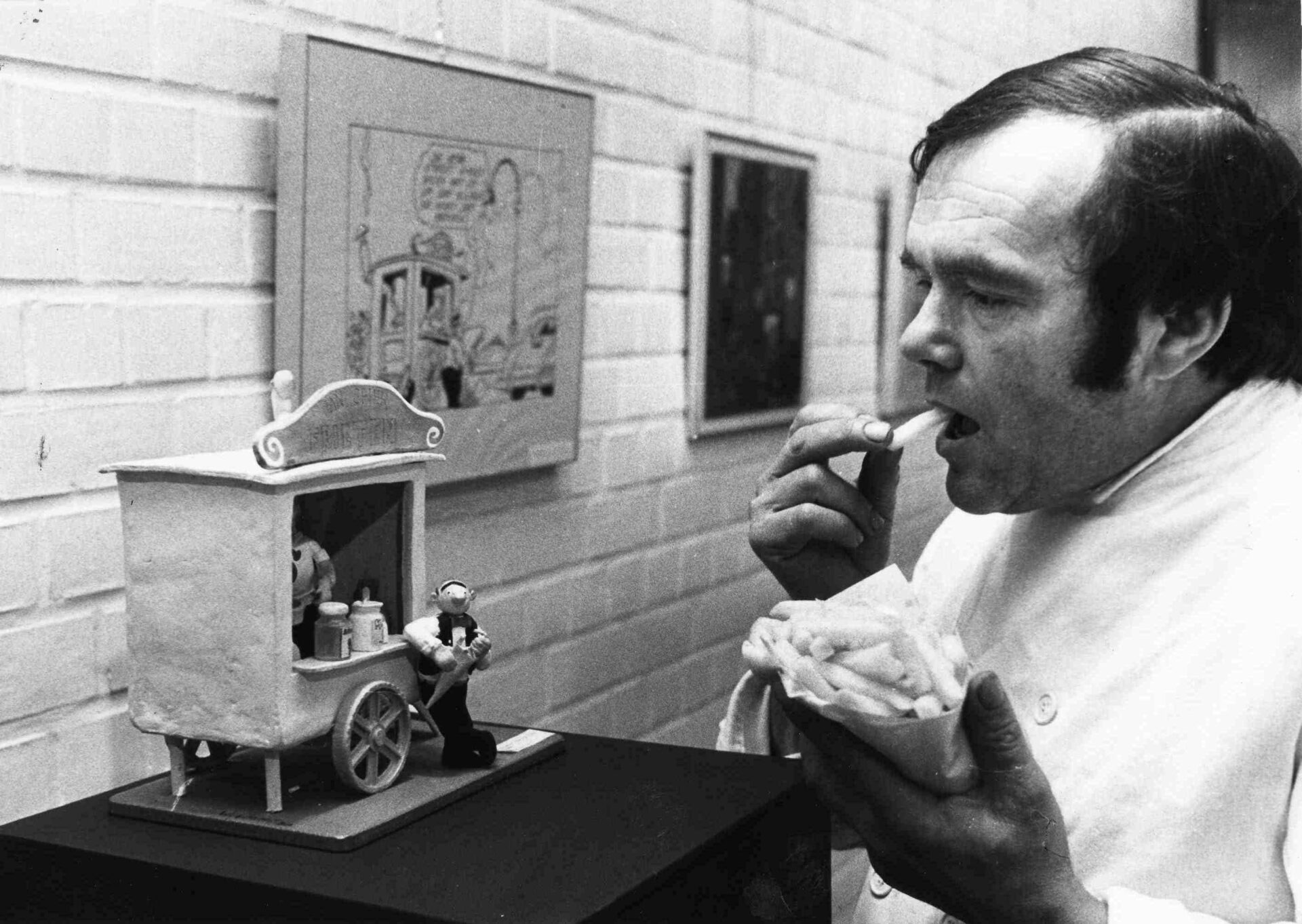How many globally renowned objects were invented in little, old Belgium? You may be surprised.
Though Belgium is the fifth smallest country in the European Union, it more than makes up for its limited geography with a long list of inventions from all industries whose creations changed the course of history – and yet were sometimes forgotten.
Viable contraceptive pill
Though the first contraceptive pill was created in the United States, the first viable oral contraceptive pill with widely considered "acceptable" side effects was created by Belgian gynaecologist Ferdinand Peeters.
Born in Turnhout, near Antwerp, in 1918, Peeters proposed the combination of 4 milligrams of norethisterone acetate and 0.05 milligrams of ethinylestradiol for ovulation suppression to the German pharmaceutical company Schering AG.

Dr. Ferdinand Peeters at his hospital desk.
The story goes that, because of the heavy influence of the Church in Belgium at the time, Peeters preferred to keep a low profile even when Schering AG released the Anovlar pill in 1961. The pill used his combination of hormones, which would go on to be Europe's first contraceptive pill and the widely understood to be the world's first acceptable contraceptive pill.
So it wasn't until 2010 that his decisive role in the contraceptive industry was uncovered by a journalist, who even discovered that Peeters' children weren't aware of his work, according to RTBF. His discovery in ovary suppression would be the standard for all future contraceptive pills.
Asphalt
Though some form of asphalt has been used for thousands of years, it was Belgian chemist Edmond J. DeSmedt who, after immigrating to the US, revolutionised road construction by coming up with a modern asphalt paving technique.
The 19th-century Swiss engineer André Merian first considered using asphalt in the construction of roads, but DeSmedt was the first to heat the asphalt and mix it with sand before paving the road in front of the town hall in Newark, New Jersey, in the US in 1870: the earliest form of hot-mix asphalt.

In 1870, Belgian chemist, Edmund J DeSmedt, laid the first asphalt pavement in US at Newark.
Afterwards he went on to use over 45,000 square metres of sheet asphalt from Trinidad Lake to pave Pennsylvania Avenue in Washington, D.C. Using heat to create hot-mix asphalt became the basis of all future asphalt road construction, though it was a man by the name of Nathan B. Abbott who filed a patent for asphalt a year later.
JPEG conversion
Though the JPEG image format is now a household term, it was Belgian physicist and mathematician Ingrid Daubechies who came up with what is called the "Daubechies wavelet".
Invented between 1986 and 1987, the wavelet is a mathematical function that was fundamental to image-compression algorithms like JPEG. These algorithms shed unnecessary elements in the image to make the files smaller to take up less space and transfer more efficiently.
Wavelet's contribution to image-compression algorithms includes enabling computers to act like human eyes, providing greater resolution for the focus of the image and reduced resolution for lesser essential features. Ingrid Daubechies called the final result of this compression "mathematical caricature," according to the New York Times, because of how the images are reduced to their essential features.
[caption id="" align="alignnone" width="1024"] Ingrid Daubechies in 2018. Credit: Wikimedia Commons[/caption]
Ingrid Daubechies in 2018. Credit: Wikimedia Commons[/caption]
Daubechies developed the theory and made the discovery while working in the US. She had previously won the Louis Empain Prize for Physics in 1984, awarded to a Belgian scientist every five years who had done extraordinary scientific work before the age of 29. In 1994, she was also awarded the Steele Prize for mathematical exposition by the American Mathematical Society.
Body mass index (BMI)
Patients may have heard their doctors mention body mass index (BMI), but what they might not know is that this commonly used measurement was developed by the Belgian mathematician and statistician, Adolphe Quetelet, in the 19th century.
Born in 1796, he developed the Quetelet Index, as it was called back then, in 1832 after studying human growth and realising that outside early childhood and adolescent growth spurts, weight generally increases as the square of the height. However, BMI was not adopted until the second half of the twentieth century after experts began studying the connection between weight and cardiovascular disease, and physiologist and nutritionist Ancel Keys returned to the Quetelet Index and coined it body mass index in 1872.
[caption id="" align="aligncenter" width="370"] Adolphe Quételet by Joseph-Arnold Demannez. Credit: Wikimedia Commons[/caption]
Adolphe Quételet by Joseph-Arnold Demannez. Credit: Wikimedia Commons[/caption]
Quetelet was also interested in astronomy, meteorology and the statistics of human traits. His 1835 essay A Treatise on Man and the Development of His Faculties suggested the existence of an "average man" as the central value of a bell curve of human traits. The text delved into "moral statistics" and attempted to explain antisocial acts through numbers.
Plastic
Born in Ghent in 1863, Belgian chemist Leo Baekeland is credited with having invented the first thermosetting plastic – in other words, plastic that does not become softer with heat. He created it in 1907 while living in America and named it Bakelite after himself.
But Bakelite was not Baekeland's first invention. After receiving his doctorate at the University of Ghent (at the age of 21!), he taught at the same university in 1889, after which he moved to the US in 1889. There, he started his own venture to manufacture Velox, a photographic paper that could develop under artificial light and his first invention.
[caption id="" align="aligncenter" width="800"] The first semi-commercial Bakelizer. Credit: Wikimedia Commons[/caption]
The first semi-commercial Bakelizer. Credit: Wikimedia Commons[/caption]
His journey towards plastic began in 1905 while he searched for a synthetic substitute for shellac. Thus, Bakelite was born: a condensation of formaldehyde and phenol at high pressure and temperature, for which he received many honours. Bakeland would go on to serve as the president of the American Chemical Society in 1925.
Saxophone
Perhaps the most well-known of all Belgian inventions is that of the saxophone by Adolphe Sax in 1840.
Born in Dinant in 1814 to a musical instrument maker, Sax began working in his father's business. It was in fact at his father's business that Sax created his first invention: improvements to the bass clarinet, which he later patented.
After several other inventions, including a piano-tuning process and a sound reflection screen, he invented the saxophone in 1841 after searching for an instrument "which sounded similar to stringed instruments, but with more strength and intensity."
[caption id="" align="aligncenter" width="471"] Adolphe Sax. Credit: Wikimedia Commons[/caption]
Adolphe Sax. Credit: Wikimedia Commons[/caption]
He patented the new instrument five years later, and with the help of his composer friend Jules Demersseman, who composed many pieces for the saxophone, the new instrument slowly gained popularity.
Unfortunately, legal troubles with his patents led to poverty that would follow him for the rest of his life, even though today, the saxophone is an essential component in almost every music genre there is.
French Fries
Though it is a hotly contested topic, one can't think of Belgian inventions without at least wondering about the most famous food item in Belgium after waffles. Now widely considered part of American cuisine despite the cross-Atlantic name derivation, France and Belgium continue to argue over the origin of the greasy fried potato strips.
Around a decade ago, Belgium even requested that UNESCO officially recognise French fries as Belgian heritage (the bid was rejected).

The French Fries Museum. Credit: Belga Archives
The origin of French fries in Europe has been traced back to the Spanish, who brought potatoes from Peru in the 16th century. During this period, most of today's Belgium was under Spanish control, so it is likely that Belgian citizens would have received potatoes shortly after. The story goes that in the 1700s, Belgians living in Meuse Valley traditionally ate small fried fish, which they then replaced with small fried slices of potatoes when the rivers froze during the winter.
The French anecdote, however, claims that French fries were first created in Paris in the 1780s and sold by street vendors on the Pont Neuf. Unless more historical research comes to light, however, Belgium and France are likely to continue arguing.

